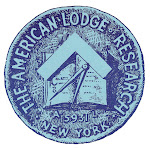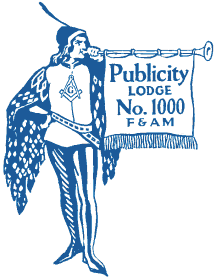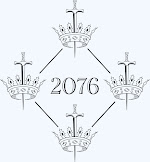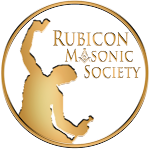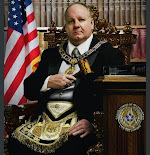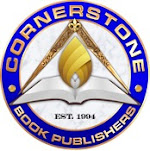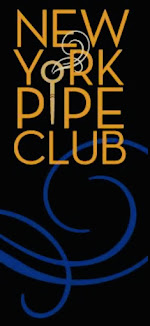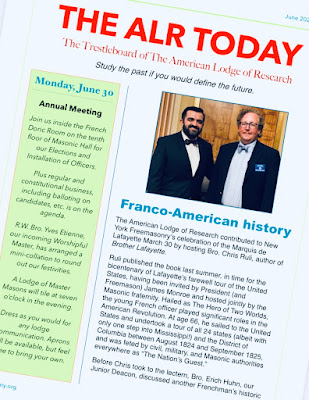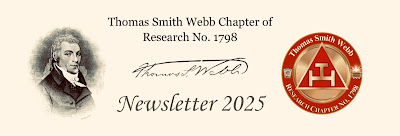Sunday, June 29, 2025
‘Central Virginia Masonic Con’
I guess September isn’t that far away anymore. Near the end of that month, a Masonic Con is planned for Virginia. From the publicity:
Central Virginia Masonic Con
Saturday, September 27
9 a.m. to 5 p.m.
Historic Masons’ Hall
1807 East Franklin Street, Richmond
Click here
Join us for an event open to both Masons and those curious about Freemasonry. This will be a day full of Masonic education on history, our civic connections, and esoteric aspects.
$40 (plus PayPal fee) per person.
Event Speakers
Shaun Bradshaw: Past Grand Master of the Grand Lodge AF&AM of North Carolina, 33°, KYGCH, OPC. A “proud Masonic esotericist” because he believes in the transformational power of the Craft’s rituals. He understands the value of Freemasonry as both a fraternity and a Western Mystery Tradition. A passionate promoter of Masonic education in the areas of lodge leadership, administration, and Masonic philosophy.
Akram R. Elias: Past (2008) Grand Master of the Grand Lodge of the District of Columbia. He has 35 years of professional experience in the fields of Public Diplomacy and Cultural Intelligence. MW Elias is a global speaker on the subject of America: The Great Experiment.
Matt Parker: Founder of the North Carolina Masonic Research Society; Chair of the Grand Lodge Committee on Public Relations; member of the Grand Lodge Library Committee; and 32° Scottish Right Mason, SJ, and member of the York Rite as well as other invitational bodies and esoteric orders.
Jon T. Ruark: Past Master of The Patriot Lodge 1957 in Fairfax. His love of technology and gadgets led him to start The Masonic Roundtable as an online dialogue platform. He is an engineer for the federal government by trade, with Masonic interests leaning toward the esoteric and philosophical aspects of the fraternity.
Your ticket price includes breakfast and lunch, which will be provided. After purchasing a ticket through PayPal, you will be added to the list of ticketed attendees.
All proceeds go to Richmond Randolph Lodge 19 and are intended to cover costs. In the event excess money is collected, it will be donated to Masons’ Hall Historic Preservation efforts.
Saturday, June 28, 2025
‘Third Annual St. John Baptist Luncheon’
 |
| In the retail area at the Cranbury Inn. |
The 2025 St. John Baptist Luncheon is in the books and a great time was had by all!
Probably would’ve been better if more of our party had arrived, but health concerns, domestic tranquility priorities, and other unexpected obstacles kept most from getting to the Cranbury Inn, located in historic Cranbury, (est. 1697!) New Jersey.
Ben, Erich, and I toasted the Baptist, talked Masonic history, ate heartily, reminisced on old friends no longer animately existent, and drank—shamelessly, in this age of equity—more than our fair share of beer, ale, and jynnan tonnyx. We wrapped it up before things got sloppy.
I’m sure I’ll remember more after some sleep.
Labels:
Ben Hoff,
Cranbury Inn,
Erich Huhn,
St. John the Baptist
Thursday, June 26, 2025
‘A valediction at The ALR’
And speaking of newsletters (see post below), the June issue of The ALR Today, the trestleboard of The American Lodge of Research, was disseminated this week. Amid the coverage of the previous meeting, a preview of the next meeting, and publicity for new books and podcasts and Grand Lodge’s Masonic University and more is the outgoing Worshipful Master’s message. Excerpted:
“Don’t let me in the East of any more Masonic groups. I barely know what I’m doing!”
In a more analytical disposition, he advances a few ideas to reform the lodge’s operations.
➤ Regarding the annual book of transactions, he points out The ALR hasn’t gone to press in a decade and a half for want of material to publish. The presentations in lodge mostly are PowerPoints, which are useless in book publishing. The Master suggests switching to a digital magazine format, be it annual, semi-annual, or quarterly.
➤ For membership, he proposes discontinuing the trigradal form (Corresponding Membership, Active Membership, and Fellowship), and offering plain Membership, with election to Fellow reserved to the few “who have made a difference in Masonry.” The logic is, without books to mail to Corresponding Members, what exactly is the correspondence? I don’t think this anarchist realizes how difficult, legally, that one will be to achieve because of Grand Lodge law.
➤ On the slightly less perilous side, the Worshipful Master pitches a revamp of the lodge’s meeting schedule. The current (and maybe original since the launch in 1931) scheme has three Stated Communications and other occasional events on weeknights throughout the year. By switching to Saturdays (like many—maybe most?—research lodges in the country), the brethren can enjoy more time together. Or maybe make a combination of Saturdays and weeknights. This might be a hard sell too. Everyone is accustomed to coming to Masonic Hall on weeknights for all their meetings, and it’s hard to assess a group willingness to be cleaved from family, religious custom, and recreation for another Masonic meeting, but, as noted, it works elsewhere.
➤ Perhaps more easily achieved could be his idea to lengthen each term from one year to two, and to open four meetings each year instead of the three. He reasons:
“We reorganize the officer line every year—that is, after every three Stated Communications. This is difficult because, naturally, we need a reliable stream of industrious future officers which we do not have. My idea is to embrace the schedule many research lodges across the country keep: the two-year term, with four meetings per year... Instead of having to find a new officer or two after three meetings, we’d have eight meetings. There are more opportunities for more brethren to get involved.”
➤ More ambitiously, he pitches an idea gleaned from a research lodge in another state that travels and devises weekend getaways around its meetings. That lodge visits historic sites, enjoys meals together, and does other things before and after its Saturday morning tiled/tyled meetings. The ALR has legal permission to travel about the State of New York already. It’s merely a question of logistics to plan the occasional weekend trip to someplace, combining the lodge meeting with a thematic visit to a relevant locale.
The Master also offers a list of frustrating tasks he’ll keep working at, one of which is the not-so-simple procurement of a box. The lodge needs a durable container for the paraphernalia used during the meetings. It needs to be both large enough to hold the stuff, and small enough—that’s the rub—to fit into our storage locker. So, something 17 inches wide and 17 inches deep is being sought, but is maddeningly elusive. “In this search, I am become Ahab,” he confesses. I share this detail to enlist your help. Please leave a comment below if you have any leads.
The ALR’s Annual Meeting will take place on Monday the 30th at 7 p.m. in Masonic Hall. RW Bro. Yves Etienne will be installed in the Solomonic Chair, so come out and cheer him on. The all-star installation team—the Harlem Globetrotters, the 1927 Yankees, the ’94 Rangers of installation teams—will be MW Bill Sardone, RW Paul Huck, and RW James Gregg.
Wednesday, June 25, 2025
‘The Plumbline gauges libraries and museums’
 |
| The Plumbline for Summer 2025. |
I hope you enjoyed a fitting St. John’s Day celebration with your lodge (or other Masonic group), and made some memories. Yesterday also saw the publication of the summer issue of The Plumbline, the quarterly newsletter of the Scottish Rite Research Society.
In the skilled hands of Editor Chris Ruli, this periodical now begins measuring the libraries and museums that serve the Masonic fraternity, visiting the Grand Lodge of Iowa’s massive repository of books and artifacts on its first stop. Assistant Grand Librarian and Curator Julia Wells is profiled. She is known to some of us via the Masonic Library and Museum Association, but did you know she comes from a Masonic family going back generations?
The library itself is a renowned institution. I’m assuming that, because it’s not in a congested coastal city, it has the most square footage of any of the major research libraries serving the Masonic world. I hope to visit one day.
Elsewhere in the pages of the now digital newsletter, Ruli defines for us the Archive Maturity Matrix. This is a trestleboard archivists may employ to quantify the sufficiencies and deficiencies of their facilities, and to chart improvements where needed.
I’ll see if I may bootleg this for the MLMA’s newsletter.
Been wondering what will be this year’s bonus book? Look for Chronology of the Supreme Council, 1801-1859 soon.
To join the SRRS, click here.
Monday, June 23, 2025
‘Manchester Masonic memories’
My favorite Masonic temple in all New Hampshire will be celebrated on its hundredth anniversary next Sunday with a cornerstone re-dedication. Wish I could be there.
I hope they’ll put that time capsule on social media.
I bet they had a good day on Wednesday, June 24, 1925 for laying the cornerstone of this building. There was a procession involving several lodges, plus a commandery and DeMolay. Music was provided by a band (marching band, I assume) and the Orpheus Quartet. (Dartmouth had a music club named Orpheus, a choir of about fifty voices, and I wonder if this was a foursome from that group.)
And 1925 was a good year for Masonic temples in the Granite State (and practically everywhere else in the country), with cornerstone ceremonies and/or dedications also at Keene, Derry, Concord, Canaan, Farmington, maybe others.
Have fun, brethren!
Thursday, June 19, 2025
‘TSW Chapter on Saturday’
Thomas Smith Webb Chapter of Research will open its Summer Convocation Saturday morning in Utica, and has a few speakers scheduled to take to the lectern. This will be part of the annual St. John’s Weekend festivities. (I’ve never attended a Weekend, so I don’t know exactly what they’re about, but they are major events on the New York Masonic calendar.)
Contrary to what you might have heard about an afternoon meeting, the chapter will open at 9 a.m. in the temple. On the agenda:
- “The Esoteric Aspects of Our Altars,” by Comp. Gregory
Attire: Suit or Red Jacket. Open to Mark Master and Royal Arch Masons.
EHP Ken Stuczynski also reports a book of transactions is in an embryonic stage; the website soon will accommodate dues payments; and the schedule of meetings will be:
TSW/Western New York
Lodge of Research
September 13 at 10 a.m.
Valley of Buffalo/Virtual
TSW/The American
Lodge of Research
January (date & time TBA)
Masonic Hall, NYC/Virtual
Grand Chapter
(details to come)
Sunday, June 15, 2025
‘Rebuilding Jerusalem and retracing Jones’
 |
| Bro. Tom discusses John Paul Jones during the research lodge’s meeting yesterday. |
Great meeting yesterday for New Jersey Lodge of Masonic Research and Education 1786.
Getting into the building turned out to be a little tricky, but everything went smoothly from then. Attendance was terrific—not huge numbers, but several faces we haven’t seen in a while, and some in a really long while. Bro. Matt, erstwhile Secretary, who still keeps a hand in things by publishing our quarterly trestleboard, was there to the delight of those of us who’d been around long enough to know him. And Bro. Sal Corelli (they traveled together) was a sight for red eyes. Plus, Bro. Paul and Bro. Jay, who don’t get to our communications often enough.
We benefitted in profit and pleasure from three presentations.
Secretary Erich Huhn reviewed the Allen Roberts book Freemasonry in American History, which is the current selection of the book club jointly run by the research lodge and Jerusalem Lodge 26. (I admit to getting a chuckle out of their announcement of this title being the club’s first choice of reading material.)
His many books have value, but Roberts was a writer of popular history, not academic research works. Huhn, who is completing a doctoral dissertation on Freemasonry in nineteenth century America, explained that for a Masonic researcher, having sources that include citations is fundamental and essential. We simply need to know where the facts originate, and maybe sometimes we need to see the sources ourselves.
 |
| Amazon |
Next, Treasurer David Palladino, of Jerusalem 26, explained the process of saving that 208-year-old lodge and its 1920s temple from self-inflicted ruination. Laboring in (pardon the term) five-year plans, the goals of saving both the building and the body of Masons inside it requires Heracles’ strength and Job’s perseverance. Big money from the state for historic preservation is going into the temple, and a pointed vetting process for making Masons are just the groundwork of the rebuilding. “I have not yet begun to fight!” could be a motto there, I suppose.
Success in the meantime is seen in the lodge’s activities. Outside of its meeting nights, Jerusalem hosts its Academy of the Humanities. Informed by the education encouraged by the Second Degree of Freemasonry, this project gives good and wholesome instruction in areas varying from how to organize the mind to dining etiquette to philosophy and poetry and music and more. David mentioned Observing the Craft is an inspiration.
It sounds like the lodge I’ve always wanted so, naturally, my work schedule prevents me from ever getting there.
We had one research presentation on the agenda. Bro. Tom Thurber, not a member of the research lodge, but a Past Master of Audubon-Parkside 218, visited to tell us about “John Paul Jones’ Masonic Journey.”
There wasn’t much I knew about Jones other than he famously said “I have not yet begun to fight!” and he’s an ancestor of the Led Zeppelin bassist—and it turns out neither is true! Thurber unpacked an amazing and detailed story of where Jones’ maritime career intersected with Masonic lodges and their members. I can’t imagine there could be conclusive evidence of Jones and his Brother Masons colluding in his professional advancement, but our speaker connected dots that show Jones visiting lodges up and down the American colonies and walking away with employment arrangements. It seems to me that Jones, son of a gardener, probably would not have achieved great heights without some help.
For example, he arrives at the lodge in Fredericksburg, Virginia one day in December 1774, presenting himself as a Brother in distress. He meets Bro. John Read and Bro. Robert Smith. Smith is the younger brother of the Mason who sponsored Jones’ petition at the lodge where he was made a Mason in Scotland three years earlier. What are the odds? Read, a nephew of Benjamin Franklin—and Franklin appears repeatedly in this story—gave Jones his commission in the Continental Navy when the shooting started in the American Revolution.
Jones became the first lieutenant in that navy—not a 1st Lieutenant, but the first to be ranked lieutenant in that service.
In other travels, he arrives in North Carolina where he meets Bro. Joseph Hewes (great name for a Mason!), signer of the Declaration and owner of a shipping company, who hires Jones. Incidentally, Hewes was born and died nearby in Princeton.
 |
| Copy of the bust owned by The Met. |
Did you know Jones’ frigate, Bonhomme Richard, was named for “Poor Richard,” Franklin’s pen name for authoring the beloved almanac at mid eighteenth century?
Thurber does not claim to be the first to chart Jones’ career, but to point out how the Masonic connectivity is an overlooked aspect of that history.
In other news, our research lodge will be busy in this two-year term. In September, the lovely and talented Shelby Chandler, himself of Fredericksburg Lodge in Virginia, will visit for discussion of things American Revolution. In October, we’ll visit a lodge way up in north Jersey to give talks and introduce the brethren there to what research lodges do. And a conference is being planned to delve into the history of Masons who were on the losing side of the Revolution, and who skedaddled to Canada for all the obvious reasons.
A new website is being developed, and other helpful improvements are coming together.
Next meeting: Saturday, September 13 at Freemasons Hall in North Brunswick.
Saturday, June 14, 2025
‘1759 and all that’
 |
| PGL of Cheshire I think that churchwarden should be a clay. |
And speaking of the Entered Apprentice Degree (see post below), congratulations to Stanlow Lodge 6257, under the United Grand Lodge of England, upon initiating two candidates the other day at Freemasons’ Hall in London, employing—get this—a ritual “in the style of 1759!”
I know that from a social media announcement, but what I don’t know is the source material for that ritual, but I’m a sucker for anything eighteenth century Masonic. Stick a 17 on it, and I’m there.
Stanlow 6257 is not based in London. The lodge is part of the Provincial Grand Lodge of Cheshire, which celebrates its 300th anniversary in 2025. Anyway, this edition of The Magpie Mason isn’t about anything directly Masonic, but concerns an alcoholic beverage beloved by America’s most famous Freemason.
Mention of the drink named Cherry Bounce also popped up on social media this week:
I’m not much for sweet drinks, but this sounds pretty good on account of the quantity of either whiskey or brandy one adds to the mix. The Mount Vernon Inn Restaurant has this to say:
Among the few recipes known to have been used by the Washington family is this one for Cherry Bounce, a brandy-based drink popular in the eighteenth century. It seems to have been such a favorite of General Washington’s that he packed a “canteen” of it, along with Madeira and port, for a trip west across the Allegheny Mountains in September 1784.
This fruity, spiced cordial requires a bit of work and time, but the result is well worth the effort. After pitting, halving, and mashing the cherries, be prepared to set aside the sweetened brandied juice for twenty-four hours and then again for about two weeks after infusing it with spices.
Enjoy small glasses of Cherry Bounce at room temperature and keep the remainder on hand in the refrigerator. This recipe is a modern adaptation of the 18th-century original. It was created by culinary historian Nancy Carter Crump for the book Dining with the Washingtons.
There are other recipes that look easier and are for smaller batches that sound more feasible for people like me. Seek out your favorite source of Colonial concoctions instructions.
 |
| Farmer’s Almanac |
This beverage sounds like a really good palliative, or something to serve at a table lodge or festive board, especially if you’re marking a Washington-related anniversary—or recreating a 1759 ritual. Vivat!
Friday, June 13, 2025
‘French Rite EA° Tuesday’
If you like Garibaldi Lodge’s EA°—that French Rite First Degree rendered in Italian—then you’ll love the original as conferred by l’Union Française Lodge 17, in French, and in the far more intimate setting of the French Doric Room. So be on the tenth floor of Masonic Hall at six o’clock next Tuesday evening.
No one will be admitted once the degree begins at 6:45. Be prepared to work your way into a tiled Masonic lodge room.
The ritual often is said to be Scottish Rite, and while it is similar to the A&ASR First Degree, it in fact is older than that—for example having been worked by this lodge since 1797. It features the alchemical and Rosicrucian symbolism that sets it apart from the Preston-Webb-Cross work known to the rest of us in New York.
The only question I have is will the Empire State Building be lit in the blue, white, and red of France’s Tricolour? We’ll see.
The Worshipful Master is V∴W∴ Bro. Ziad, serving another term in the East, and who you also might know as our Tiler in The American Lodge of Research. My cable tow will not allow me to be present, but you should go!
Grand Lodge’s Tenth Manhattan District is home to the lodges that work in foreign tongues. You can hear French, Spanish, Italian, and several others spoken.
Wednesday, June 11, 2025
‘MW Daniel Tompkins’ 200th deathday’
For example, he was born June 21, 1774 in Scarsdale. He was elected Assistant Grand Secretary of the Right Worshipful Grand Lodge of New York on June 4, 1800. Became Grand Secretary of the Grand Lodge in June 1801. Was elected Grand Master in 1820 on St. John Baptist Day—while serving as Vice President of the United States!
And he died on this date two centuries ago, on June 11, 1825.
I have nothing profound to say. I’m just remembering his passing on this bicentennial anniversary.
Here are a few previous Magpie posts:
▻ A look at Tompkins’ final resting place in Manhattan here.
▻ Excerpts from his revealing writings while a student uptown at Columbia College here.
Tuesday, June 10, 2025
‘The ALR: Installation’
I can’t believe the year is nearly finished, but in three weeks The American Lodge of Research will host its Installation of Officers when I will be safely ushered to the sidelines where I belong. RW Bro. Yves Etienne will ascend to the Solomonic Chair; the officer team will advance; and a new face or two might join the line.
If you can get to Masonic Hall on Monday the 30th, we’ll be in French Doric on 10 at 7 p.m.
Being a research lodge, our Installations are brief, fast, and perfunctory because those involved already have been feted, at least once, elsewhere over the years, so there’s no dinner, cocktails, etc. Wait, I just learned there will be a mini-collation!
I am drafting a farewell speech that I have trimmed to a perfect forty-five minutes, and I predict there won’t be a dry eye in the room.
Returning to civilian life, my Masonic activities will be centered on my three research lodges, plus whatever occasional, annual, or sporadic events of a like nature that catch my eye.
Hope to see you on the 30th.
Saturday, June 7, 2025
‘Now that’s how you put on a Masonicon!’
Today was the third annual Hudson Valley Masonicon at Hoffman Lodge 412 in Middletown. Eight speakers, plus a newly fashioned degree that impressed me, being reminiscent of how side degrees once were common in lodges. On the down side, we missed Rashied, who had to cancel, but otherwise the hard work that went into planning and hosting the event paid off handsomely.
The presenters were:
➣ Pasquale Leo on “The Point Within the Circle”
➣ Magpie Mason on “Masonic Learning: Search and Research”
➣ Andrew Berry on “My Brother’s Keeper: PTSD Awareness for Freemasons”
➣ Greg McCloud on “Charity in the First Degree”
➣ John Konrad on “Climbing the Ladder”
➣ Kyle Williams on “North Star Program & Officer Development”
➣ Chris Winnicki on “The Roman Catholic Church and Masonry”
➣ Keynote Piers Vaughan on “The Purpose of Initiation in Masonry”
That degree was called “Lodge of Parallel Saints Degree.”
I didn’t get to see all the talks. For example, I skipped Bro. Leo’s because he and I spoke concurrently; and I had to miss Bro. Kyle (apologies, but I’ve been NorthStar certified for ages) in order to hear Bro. John’s presentation. I found it interesting how those talks I did witness all seemed to be thematically unified. Not the subject matter, although there were a few little overlaps, but the overall gist of the day was encouragement to put the lessons of Freemasonry into practice within lodge and without; to grow beyond performing rituals.
 |
| Tracing Board from the ‘degree.’ |
Speaking of rituals, the brethren did a great job with the “Lodge of Parallel Saints Degree.” Before anyone at Grand Lodge has a heart attack, let me explain this was an exemplification of a recently written ritual. No degree was conferred. Nothing outside or at odds with the Standard Work was introduced to the brethren. A “Lodge of Enlightenment” was opened, and the officers imparted a lesson in, I think it’s safe to say, achieving balance, using the examples of the Holy Saints John as guides. Hopefully this will become a lodge program for the Orange Rockland Sullivan District.
 |
| Vivat! |
‘Scott Council 1’s first T.I.M.’
 |
| Grand Council of Royal and Select Masters of New Jersey Proceedings of 1860. |
Today is the anniversary of the death in 1867 of T.I. Moses Coddington, the first Master of my Cryptic Council, Scott No. 1, in New Jersey.
I know this because I received an email earlier this week from Comp. Nick, who is researching the early days of the Grand Council of Royal and Select Masters of New Jersey, founded in 1860. I gave him what little information I had and referred him to the Masonic Temple Library and Museum in Philadelphia to find hard copies of New Jersey Grand Council’s early books of proceedings which, I’m only assuming, it inventories. And I sent him the above snippet of the first book of proceedings, which I’ve published on this blog a couple of times in recent years. Reading it anew, I noted the names of the three Cryptic Masons representing Scott Council 12 at the convention in New Brunswick that established Jersey’s Grand Council.
Scott 12, as you can see, was chartered by Pennsylvania’s Cryptic Grand Council (it met in New Brunswick). Upon creation of the Grand Council of New Jersey, Scott 12 became Scott 1, and Companion Coddington became its inaugural T.I.M.
So I took a quick look online for any information on Coddington and, to my surprise, there is some biography. From Find a Grave:
Moses Coddington
BIRTH 8 Feb 1826
New Brunswick, Middlesex County, New Jersey
DEATH 7 Jun 1867 (aged 41)
New Brunswick, Middlesex County, New Jersey
BURIAL
Willow Grove Cemetery New Brunswick, Middlesex County, New Jersey
Moses Coddington was born 1826 in New Brunswick, Middlesex County, NJ, the eldest of 10 known surviving children (6 boys/4 girls) born to grocery clerk David Coddington and his wife, Deborah Van Derveer. He was the paternal grandson of Moses Coddington & Elizabeth Hutchins Bonney of Bound Brook, Somerset Co; and gr-grandson of David Coddington & Ann Stone of Woodbridge, Middlesex County, NJ.
He is a direct descendant of this family’s patriarch, Stockdale Coddington (ca. 1569-aft 1650) of Surry, England who traveled to the New World with his (1st) wife, Sarah Wood, eventually settling in Rockingham County, Vermont. This branch of the Coddingtons were later in Boston, MA until descendant John Coddington, II (1653-1715) removed to Woodbridge, NJ, where he was Constable in 1692. He was the maternal grandson Garret Van Derveer & Deborah Voorhees of Three Mile Run, Somerset County, NJ.
Moses attended public schools in New Brunswick and graduated Rutgers in 1845, after which he began his career as a bank cashier. On August 2, 1849 the 23-year old married 20-year old Caroline Amanda Runyon, daughter of Clarkson Runyon and Matilda Carman Mundy of Middlesex County. The couple would have one child: George Conover Coddington (1853-54), who died in infancy. The marriage was short-lived as Caroline died six years into the marriage. Caroline was buried in Willow Grove near her parents and infant son.
Three years later, Moses married (2nd) Emilie Mercien DuPuy, the 20-year old daughter of Episcopal Rev. Ephraim and Isabelle DuPuy. Moses and Emilie would become parents to one known child, Herbert DuPuy Coddington (1861-90). Moses and Emilie would be married just 9 years, as he passed in 1867 at age 41 succumbing to tuberculosis. He was buried in Willow Grove, but would later by joined by Emilie and his son.
Following her husband’s death, Emilie and their 6-year old son moved in with her parents, who were then in Warren County, NJ where her father was pastor of the Knowlton Church. Emilie died young as well, passing 4 years later in 1871 at age 33 in Madison, NJ, where her father had taken another post. The Rev. DuPuy and his wife then took over the care of their orphaned grandson, Herbert, who was last found at age 19 in lower Manhattan living with his grandparents, following in his father’s footsteps, working as a Bank Clerk. Herbert died in 1890 at age 28, and is buried near his parents in Willow Grove.
 |
| Grand Lodge of New Jersey 1868 proceedings, showing Union Lodge 19’s returns, notes Coddington’s death. |
Thus far, it looks to me like his cemetery plot might not be locatable. More than twenty years ago, researchers with New Brunswick Free Public Library spent two summers recording the data off readable headstones, but the Coddingtons’ do not seem to be among them.
Also, apparently Coddington did not graduate Rutgers in 1845, as stated above, but entered the college then at age nineteen. This book shows him graduating with an Artium Baccalaureatus with the Class of ’48 and earning an Artium Magister in ’51:
Being from and in New Brunswick, I figure Coddington was at labor in Union Lodge 19. (Union and Scott Chapter 4 RAM and Scott 1 RSM have been kin since the 1850s, and were under the same roof then as they are now.) Sure enough, Grand Lodge of New Jersey records show him as a Past Master in 1858 of Union 19 (not to be confused with Union 11 in Orange—today’s Livingston 11). Proceedings do not show which year he presided in the East, but he was Treasurer (remember, he worked in banking) in 1861.
Royal Arch Grand Chapter records of 1860 have him as the M.E.H.P. of Scott 4 from September 1, 1859 to September 1, 1860. In Grand Council, Coddington was its Deputy Grand Master during most of its first year until new elections were held. He did not become M.I. Grand Master.
I see Coddington appears to have been a significant name in the state’s history, based on my little reading. Not because of our late Brother, who simply died too young, but likely because of his forebears. A notable number of streets in the central area of Jersey carry that moniker.
Oddly enough, the Potentate of Crescent Shrine, not far away in Westhampton, is Vincent P. “Champ” Coddington, Jr. I’ll reach out to ask if there’s a possible relation.
It’s amazing what can be found online in only a few minutes. I’ll keep looking into him, but since today is the anniversary of Bro. Coddington’s death, I just wanted to remember him in this edition of The Magpie Mason.
Friday, June 6, 2025
‘No Pyramids, no Parthenon, no beautiful tombs or temples?’
 |
| Classical Wisdom |
You are following Classical Wisdom on Substack, yes? On Monday, its founder, Anya Leonard, posed her weekly question:
At what cost are great works? Should we celebrate beautiful monuments that were constructed on pain and thievery? Is it important to know the backstories, and does that knowledge take away from their grandeur? Should we unearth these skeletons, or let the past rest in the past?
And she begins her column with a few sentences from a beloved old detective novel worth sharing here:
“Take the Pyramids. Great blocks of useless masonry, put up to minister to the egoism of a despotic bloated king. Think of the sweated masses who toiled to build them and died doing it. It makes me sick to think of the suffering and torture they represent.” Mrs. Allerton said cheerfully: “You’d rather have no Pyramids, no Parthenon, no beautiful tombs or temples—just the solid satisfaction of knowing that people got three meals a day and died in their beds.”
Agatha Christie
Death on the Nile
Not the case with King Solomon’s Temple, obviously, with its happy masons laboring for God, but what a question!
At what cost? Pain? Thievery? Skeletons? All that precludes any love for the beautiful and sublime. (Leonard’s point is to initiate a conversation about history.)
Who knows if this ever crossed any of the laborers’ minds, but they built civilizations, and we should be thankful visitors to those enduring human triumphs.
Wednesday, June 4, 2025
‘Skene Conference tickets are on sale’
 |
| Click to enlarge. |
Tickets for this year’s John Skene Memorial Conference in New Jersey are on sale!
Make sure you will be available Saturday, August 23 for a full day of Masonic learning, feasting, and celebrating the life of Bro. John Skene, whose emigration from Scotland to the West Jersey colony in 1682 made him the first Mason in the New World.
The Speakers
Dr. Susan Mitchell Sommers, Professor of History at Saint Vincent College in Pennsylvania, has spent an inordinate sum of time and energy researching and writing about Freemasonry. If I’m not mistaken, she soon will publish a book on James Anderson, the subject of her talk at this conference.
Bob Cooper, retired curator of the Grand Lodge of Scotland and co-host of the amazing Masonic Authors Guild International podcast, also is an author of Masonic books and frequent speaker on the lecture circuit. He is known for untwisting confusing skeins (see what I did there?) in Scottish Masonic history, from Templar nonsense and Rosslyn Chapel to modern times, and will present current scholarship on John Skene.
The opening act, inexplicably, will be the Magpie Mason. Basically, I am a holdover from last year’s conference, which was canceled because something called the Masonic Restoration Foundation chose the same Saturday to host its annual symposium just across the river in Philly. I will present my talk on Thomas Reid, which explains precisely how a key treatise of Scottish Enlightenment philosophy came to be quoted at length in the lecture of the Fellow Craft Degree employed by most lodges in America.
 |
| Magpie file photo |
Plus, there will be a memorial program at the site (approximately) of Skene’s final resting place, and a cocktail hour the night before, and dinner after the conference.
I hope we can find a place to smoke too. I still have a little of the Hebrides pipe mixture I bought at John Crouch Tobacconist during the Scottish Freemasonry in America Symposium in Virginia a few years ago.
Tickets are priced according to preference. One need not attend all the events, but the symposium/dinner combo costs a very reasonable seventy bucks.
Hope to see you there.
Tuesday, June 3, 2025
‘Get the Philalethes for your lodge’
The Philalethes Society announces a way for Masonic groups to benefit their members by subscribing to its quarterly journal. No, not a copy of the printed edition that gets torn to pieces in the melee over who gets it first, but a PDF for your lodge (or chapter, etc.) to disseminate by email. From the publicity in the current issue:
Lodge and Appendant Bodies
Subscription Program
A New Program of Masonic Education for Every Lodge and Masonic Group
Since its founding in 1928, the Philalethes Society has been devoted to the promotion of the highest quality Masonic education and research. Eager to extend our mission of promoting quality Masonic education, the Executive Board of the Society is offering a Lodge Subscription Program.
As many Masons prefer electronic dissemination of materials, we would like to put the Philalethes journal into the hands of your lodge brothers or masonic group brothers who want to continue their quest for further Light in Masonry. For a nominal annual fee, every lodge can send out an electronic copy of the Philalethes four times a year via an email attachment of our journal in PDF format.
All we need is some basic contact information and payment made on a lodge or Masonic organization’s check. Here is a great opportunity to help your members be better informed and grow in their Masonic knowledge.
1. Distribution of Philalethes to your members via the Lodge Subscription Program may require the permission of your Grand Lodge or Appendant Body.
2. Recipients of Philalethes via electronic delivery will be considered “subscribers” rather than members of the Society, and may not use the initials MPS nor vote.
3. Only members of your lodge/body are entitled to this PDF copy of Philalethes.
4. A subscription is for one year (four issues) of Philalethes, which comes out quarterly.
5. All subscriptions to this program must be made on a lodge or appendant body check.
6. We invite your members to submit thoughtful and well-researched articles to our Editor for consideration.
7. This program is open to all lodges, research lodges, and appendant or concordant bodies of Freemasonry.
8. For further questions, please contact the Philalethes Society’s Secretary here.
I haven’t been able to interest The ALR in reviving Knickerbocker Chapter, so maybe this could be the way to involve the lodge in the Philalethes Society. We’ll see.
Subscribe to:
Comments (Atom)





